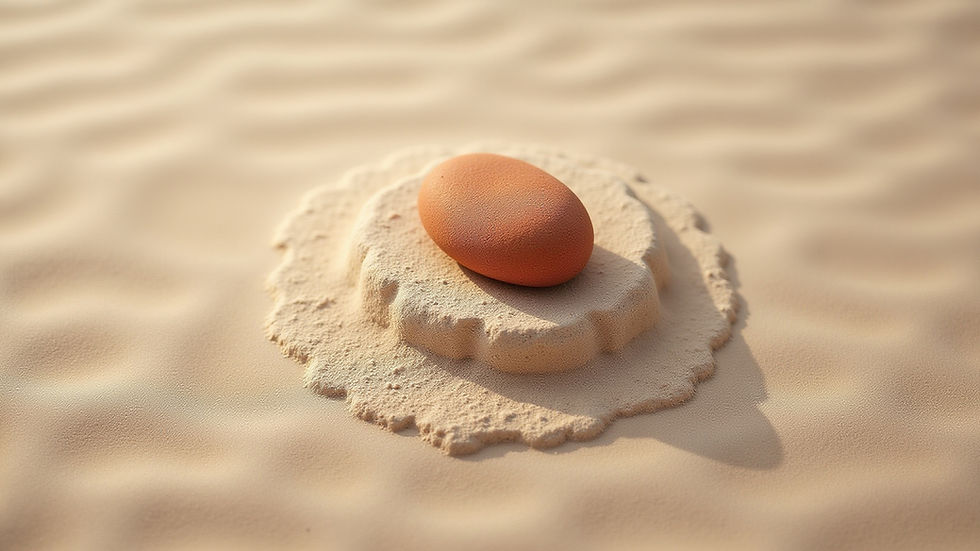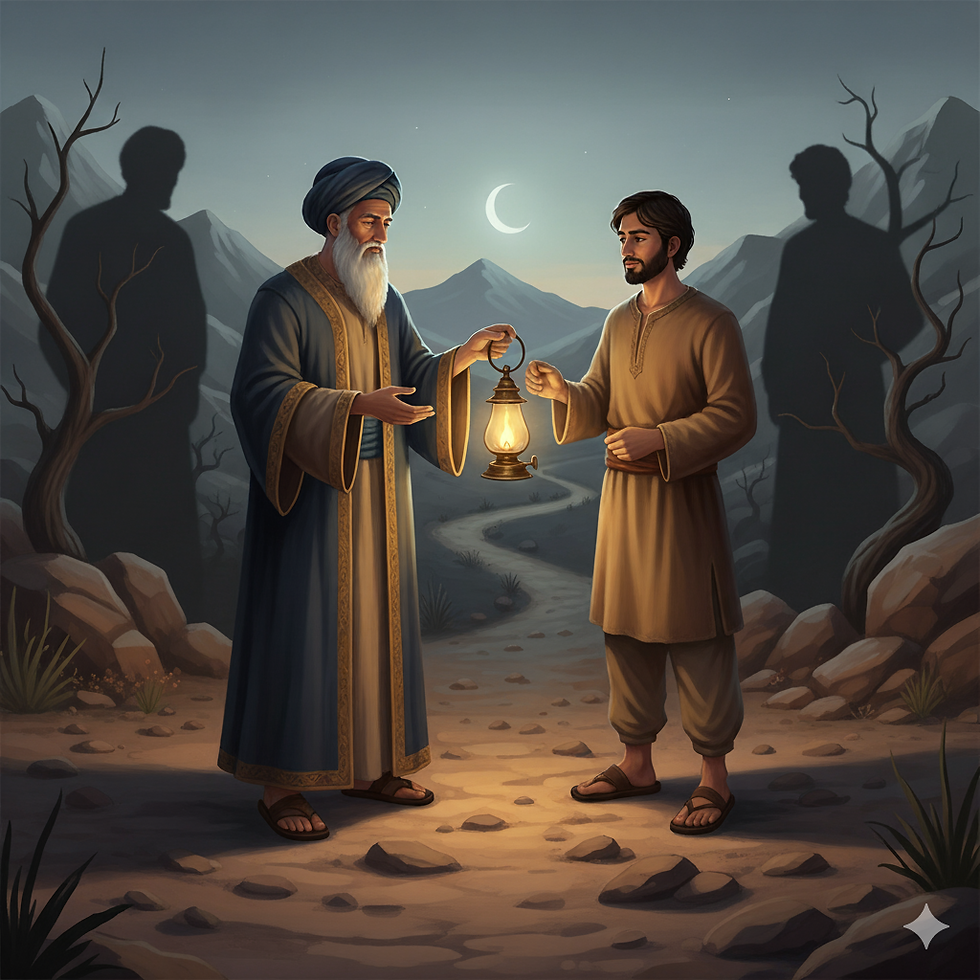The Merchant, the Stone, and the Moment
- Ted Garcia
- Jun 14
- 2 min read
Updated: Jun 15
Letting Go of Comparison, One Palmful at a Time
We live in a world that thrives on comparison. Who has more? Who is happier? Who’s doing it better?
But there is another path — one that doesn’t require escaping the world, only returning to the present. This is the quiet gift of The Noticing Stone.

✧ A Sufi Story: Farid and the Mirror Market
In a village cradled between two mountains, a man named Farid sold mirrors — tall ones, travel-sized ones, some framed in brass, others polished to a silver shine. But Farid had a habit: every time someone admired themselves in a mirror, he looked too — not at himself, but at them.
“His beard is fuller.”
“Her robes are finer.”
“Their joy is more real than mine.”
Soon, comparison wrapped around him like a vine. He judged his life not by what it was, but by what it wasn’t. He lost the ability to enjoy anything without wondering who had it better.
One autumn afternoon, an old traveler stepped into his shop. “Would you like a mirror?” Farid asked.
“No,” said the traveler with a smile. “I came to give you something.”
He pulled from a worn cloth bag a small, round stone, smooth and warm from his palm.
“When the ache of comparison returns,” the traveler said, “place this in your hand. Let it bring you back.”
“Back to where?” Farid asked.
“To now,” the traveler replied. “And to yourself.”
That night, at the village festival, Farid saw his neighbor dancing with abandon. The ache rose in his chest. He remembered the stone, reached into his pocket, and placed it in his hand. And for the first time in many seasons, he noticed: The scent of warm bread. The laughter of children. The beat of the drum…and something softer — his own heart, quiet and smiling.
✧ The Science Behind the Stone
The Noticing Stone is more than metaphor — it’s a mindfulness technique supported by science.
🔹 Tactile Grounding - Touching a small, familiar object (like a smooth stone) activates sensory pathways in the brain, helping redirect attention away from racing thoughts or social comparison loops.
🔹 Mindfulness Cues - Research shows that brief physical anchors — such as holding an object — support transitions from reactivity to presence. They act like mindfulness “reminders” that bypass the need for words. Resource: Hölzel et al., 2011; Tang et al., 2015
🔹 Neuroplasticity & Practice - Each time you pause to return to the present, you’re reinforcing a neural habit — rewiring your brain toward awareness, self-regulation, and peace.
✧ Your Invitation
This practice is simple. And powerful.
Choose a stone that feels good in your hand.
When you feel overwhelmed, distracted, or comparing — pause.
Hold the stone. Feel its weight.
Breathe. Notice. Come back.
You don’t have to escape your life to find peace.You only have to return to it — one moment, one breath, one stone at a time.
🌿 Explore more stories, science, and practices at The Noticing Stone





Comments